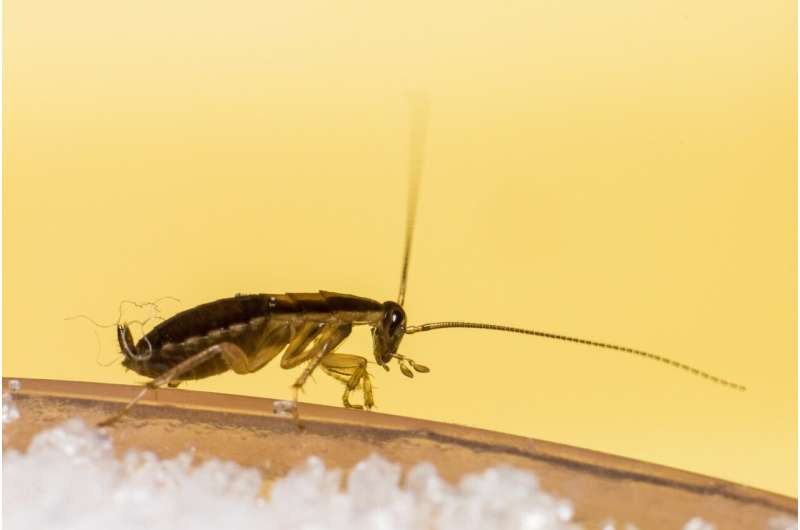New gene family of antimicrobial proteins discovered in German cockroaches

Researchers from The Institute for Integrative Systems Biology have discovered a new gene family of antimicrobial peptides (small proteins) –the Blattellicins– in a German cockroach (Blattella germanica). The study, published in the journal Scientific Reports, may help to understand how these insects can live in unsanitary environments and defend themselves against the fungal and bacterial pathogens they encounter via the beneficial symbiotic organisms that they harbor.
The I2SysBio Evolutionary Genetics group has characterized the repertoire of antimicrobial peptide genes in Blattella germanica and has discovered the presence of a new gene family of these, the Blattellicins. These are proteins that are larger than other antimicrobial peptides and with previously unknown characteristics, such as the presence of a region rich in amino acids glutamine and glutamic acid.
"The German cockroach is one of the most successful cockroach species as an urban pest associated with human populations. The study shows that one of the factors that have contributed to its success is the increase in the number of genes that encode antimicrobial proteins. Also, the presence of Blattellicins, the new family of antimicrobial proteins, could provide greater effectiveness against some pathogens," highlights Francisco J. Silva.
The function of these new proteins is unknown, but they could be antimicrobial proteins of greater efficacy or favor the formation of pores in the endosymbiont membrane, which facilitates the transfer of metabolites to the insect's cells. Cockroaches have a rich microbiota in the intestine that benefits their health, where an endosymbiont bacterium (Blattabacterium cuenoti) in the cells of the fat body stands out, providing vitamins and amino acids and participating in the storage and obtaining of nitrogen.
Thus, Blattellicin genes, which have recently evolved from Atacin genes—another type of antimicrobial peptide—could contribute to defend against fungal and bacterial pathogens. This would explain the adaptation of these insects to such unhealthy environments and also their lesser effect on the beneficial microbiota of the Blattella germanica.
The research also analyzes the production of the different antimicrobial peptides throughout development, which has made it possible to reinforce the importance of Blattellicins, since Blattella germanica express the highest levels, while only being produced in the adult stage. "The description of all the genes of the antimicrobial peptides will make it possible to identify the tissues where they are expressed and which ones are important for the cockroach's relationship with its bacterial symbionts and resistance to different types of pathogenic microbes," says Silva.
More information: Francisco J. Silva et al. Blattella germanica displays a large arsenal of antimicrobial peptide genes, Scientific Reports (2020). DOI: 10.1038/s41598-020-77982-3
Journal information: Scientific Reports
Provided by Asociacion RUVID

















